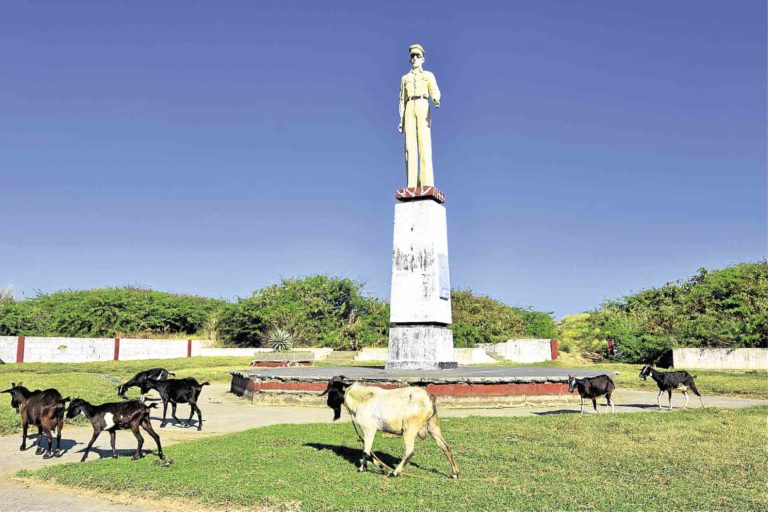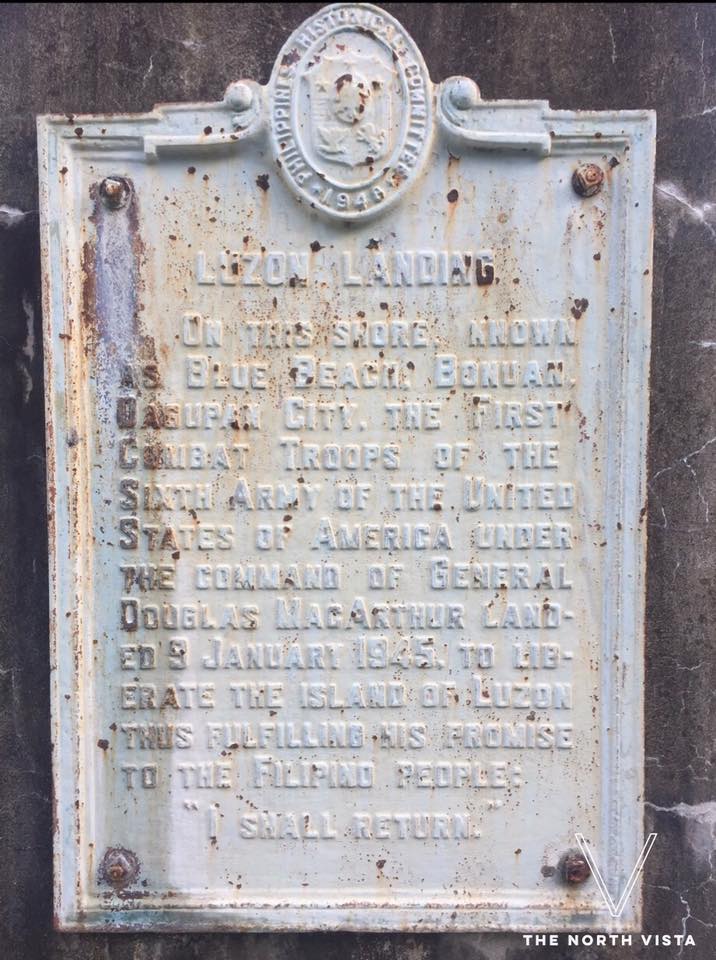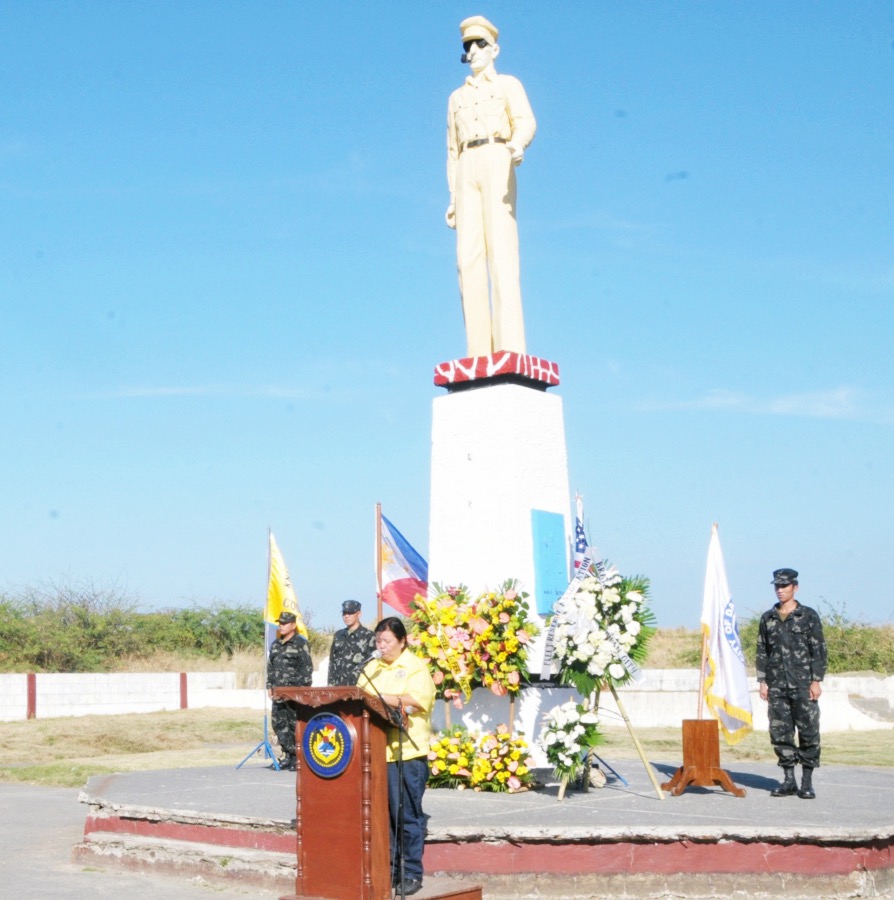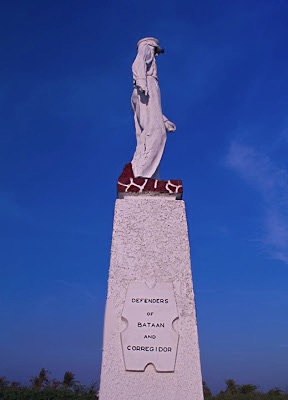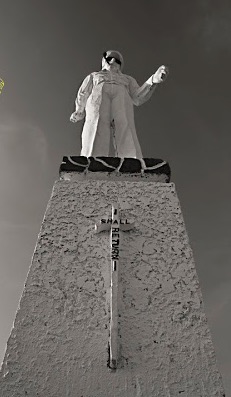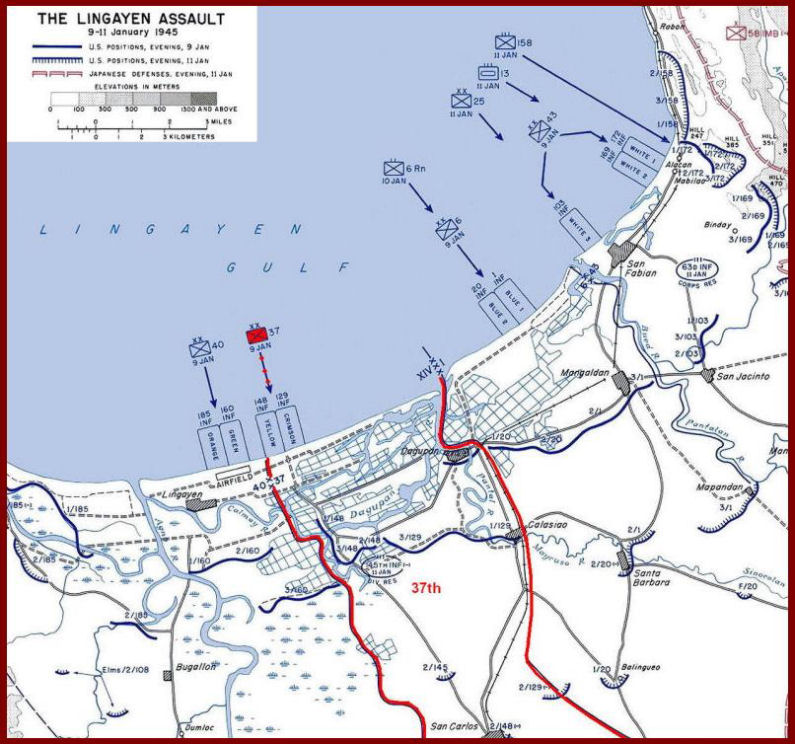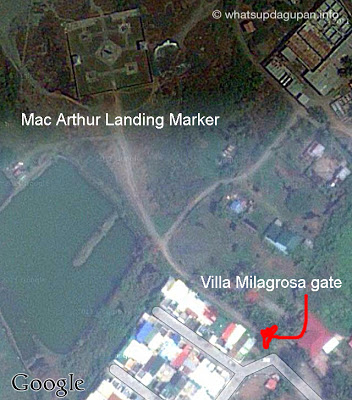MacArthur Landing Marker Statue – Blue Beach Landing Lingayen Gulf (Luzon)
Details:
At the end of a gated access road adjacent to the beach.
MonumentA statue of General Douglas MacArthur on a pedestal, with inscriptions of 3 sides. The monument is about 20 feet high and includes and informational historic marker.
From the US Navy History Website:
.
The invasion of Luzon, the main island of the Philippines, was set for 9 January 1945, with preliminary by the U.S. Navy to commence on 6 January. The plan called for 68,000 U.S. troops of the Sixth Army to be put ashore on the first day at the southern end of Lingayen Gulf (with over 200,000 troops to be ashore within several days) all under the overall command of General of the Army Douglas MacArthur. The landing beaches at Lingayen are about 110 miles north northwest of the Philippine capital of Manila, MacArthur’s primary objective.
The overall naval commander for the Lingayen operation was the Seventh Fleet Commander, Vice Admiral Thomas C. Kinkaid, embarked on the command and control ship Wasatch (AGC-9) in command of Task Force 77, the Luzon Attack Force. General MacArthur was embarked on the light cruiser Boise (CL-47). The Commander of the Sixth Army, Lieutenant Walter Krueger, was embarked with Kinkaid on Wasatch. The lead element of the force was Task Group 77.2, the Bombardment and Fire Support Group, under the command of Vice Admiral Jesse B. Oldendorf (victor of the Battle of Surigao Strait), embarked on the older battleship California (BB-44). Oldendorf would be supported by Task Group 77.4, the Escort Carrier Group, TF-78 and TF-79 carried the Army assault forces and would put more U.S. troops ashore on the first day at Lingayen than the first day of the D-Day landings at Normandy.
Vice Admiral Oldendorf’s TF-77.2 consisted of 164 ships, including six of the older battleships, six cruisers, and 19 destroyers, accompanied by an escort carrier group with 12 escort carriers, 14 destroyers, six destroyer escorts, and many other support boats.
The landings at Lingayen occurred on schedule on 9 January 1945. As it turned out, the Japanese commander, General Tomoyuki Yamashita (arguably Japan’s best general), had decided not to defend at the beaches and instead fight from inland positions in the hills, having absorbed the lesson of the futility of trying to withstand battleship bombardment at the beachhead. As a result, the landings were virtually unopposed, and the sacrifice of the U.S. ships in conducting three days of bombardment under heavy kamikaze attack was essentially unnecessary. By 16 January, the U.S. Army’s XIV Corps (Commanded by General Oscar Griswold) would be 30 miles inland, suffering only 30 killed. I Corps (Commanded by MG Innis Swift) suffered 220 killed, almost all well after the landings. (This said, the liberation of the Philippines by the U.S. Army would ultimately prove to be very costly, with over 16,000 U.S. soldiers dead or missing, as General Yamashita put up a tough fight, just not on the beaches of Lingayen).
Despite their success in driving out the Japanese forces stationed there, the Navy suffered relatively heavy losses; particularly to their convoys, due to kamikaze attacks. From 4–12 January, a total of 24 ships were sunk and another 67 were damaged by kamikazes; including the battleships USS Mississippi, New Mexico and Colorado (the latter was accidentally hit by friendly fire), the heavy cruiser HMAS Australia, the light cruiser USS Columbia, and the destroyers USS Long and USS Hovey. Following the landings, the Lingayen Gulf was turned into a vast supply depot for the rest of the war to support the Battle of Luzon.
Monument Text:
Plaques on three sides base of the statue read:
I shall Return
Defenders of Bataan and Corregidor
WWII Guerillas - It Can Be Done'
Luzon Historic Landing Plaque reads:
LUZON LANDING
ON THE SHORE KNOWS AS BLUE BEACH BUNOAN DAGUPAN CITY FIRST COMBAT TROOPS OF THE SIXTH ARMY OF THE UNTIED STATES OF AMERICA UNDER THE COMMANDS OF GENERAL DOUGLAS MACARTHUR LANDED 9 JANUARY 1945 TO LIBERATE THE ISLAND OF LUZON THUS FULFILLING HIS PROMISE TO THE FILIPINO PEOPLE "I SHALL RETURN"
Commemorates:
People:
Units:
37th Infantry Division
40th Infantry Division
43rd Infantry Divsion
6th Infantry Division
6th Ranger Battalion
6th US Army
I Corps
South West Pacific Area (Command)
U.S.S. Colorado (BB-45)
U.S.S. Columbia (CL-56)
U.S.S. Hovey (DD-208)
U.S.S. Long (DD- 209)
U.S.S. Mississippi (BB-41)
U.S.S. New Mexico (BB-40)
United States Navy
XIV Corps
Wars:
WWII
Battles:
Luzon (1944-1945)
Pacific Theater
Philippines Campaign (1944–1945)
Other images :

